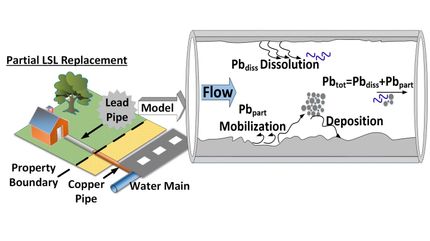DuPont Announces Additional $25 Million Funding for DuPont MIT Alliance
Advertisement
President Susan Hockfield and Provost Robert A. Brownto announced continued funding of the DuPont MIT Alliance (DMA), a research program focused on creating innovative, next-generation materials. Originally funded in 2000 as a five-year, $35 million investment, Connelly announced that DuPont will contribute another $25 million to continue funding through 2010. This 10-year, $60 million commitment makes the DMA the largest corporate R&D investment at MIT.
"The successes and experiences of the Alliance warrant our continued funding," Connelly said. "In 2000, we asked MIT scientists to give us their best ideas on science that could enhance our everyday lives. The response and resulting research has led to significant scientific achievements. These first five years focused on inventing new materials using nature and biology as the design roadmap. The second stage of the Alliance will expand the collaborative capabilities of DuPont and MIT beyond bio-based science to also include nanocomposites, nanoelectronic materials, alternative energy technologies, and next generation safety and protection materials."
Four top DMA research programs were showcased to demonstrate the goals of the alliance: to advance basic science; to create commercial potential for novel scientific applications; or to develop enabling technologies that directly relate to the strategic direction of DuPont research and development. The featured MIT scientists and their programs were: Professor Gregory Stephanopoulos (next-generation advances in metabolic engineering, including genome-wide analyses and modeling for the production of chemicals and intermediates from renewable bio-feedstocks), Professor Mriganka Sur (an early stage research program to develop a novel biopolymer-based nervous system implant that could replace nonfunctional brain tissue following traumatic brain injury), Professor Linda Griffith (a device for tissue-like culturing of liver cells, designed to provide early assessment of the toxicity of new pharmaceuticals) and Professor Michael Rubner (a novel material similar to the naturally water repellent surface of the lotus leaf).
Since its inception, the DuPont MIT Alliance has asked for proposals from the MIT community that draw upon the science, engineering and business expertise at MIT to extend DuPont's reach in the areas of biology, genetics, bioinformatics and catalysis. It has brought together the shared strengths of DuPont and MIT in materials and chemical and biological sciences to develop new materials and processes directed at bioelectronics, biosensors, biomimetic materials, alternative energy sources and new high-value materials. DMA also has provided an opportunity for DuPont to collaborate with MIT's Sloan School of Management to define new business models for these emerging technologies.
Other news from the department science
Most read news
More news from our other portals
See the theme worlds for related content
Topic world Sensor technology
Sensor technology has revolutionized the chemical industry by providing accurate, timely and reliable data across a wide range of processes. From monitoring critical parameters in production lines to early detection of potential malfunctions or hazards, sensors are the silent sentinels that ensure quality, efficiency and safety.

Topic world Sensor technology
Sensor technology has revolutionized the chemical industry by providing accurate, timely and reliable data across a wide range of processes. From monitoring critical parameters in production lines to early detection of potential malfunctions or hazards, sensors are the silent sentinels that ensure quality, efficiency and safety.






























































